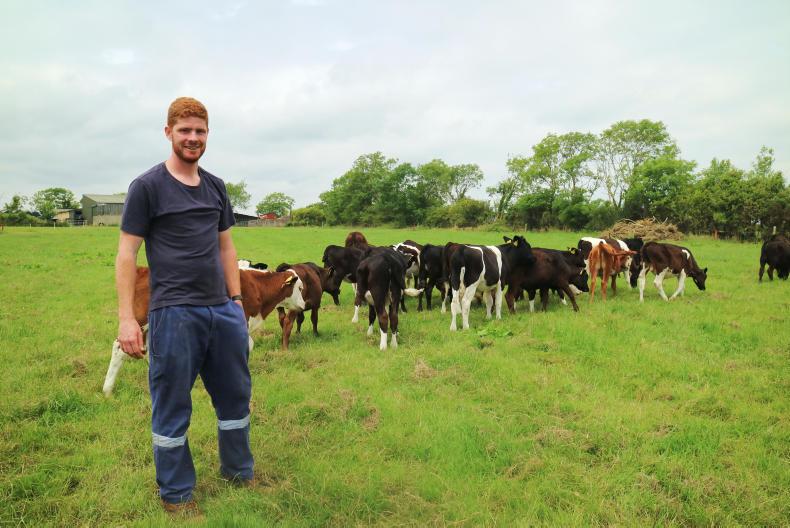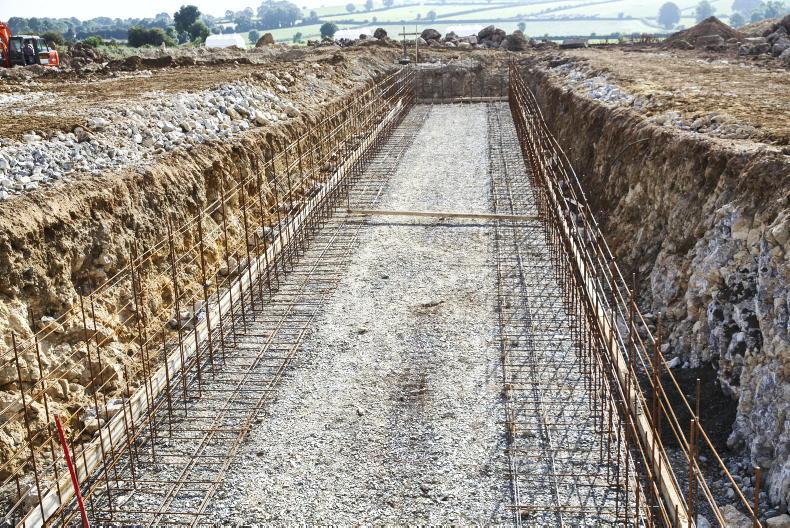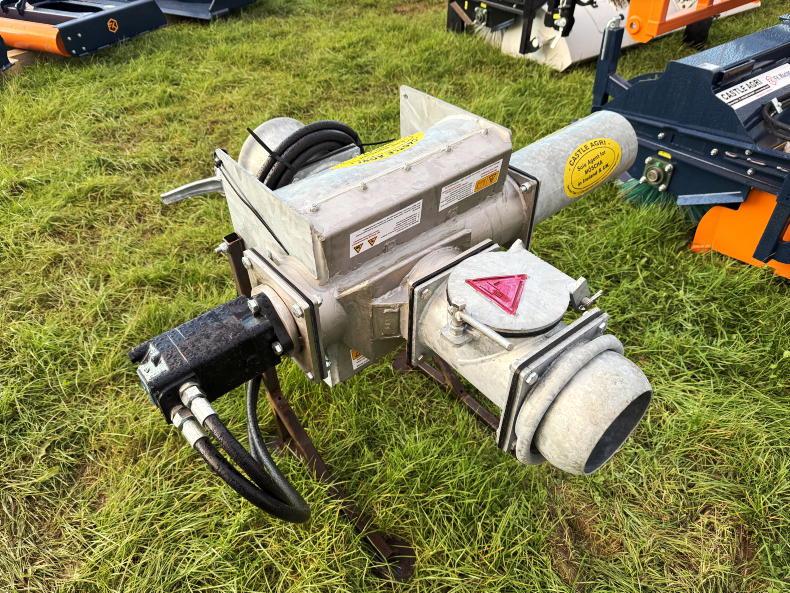Cattle slurry is a valuable resource on livestock farms. When used effectively, it can supply significant amount of nutrients for grass production and it can help offset fertiliser costs.
Slurries and manures can vary in quality and nutrient content, particularly due to different dilution rates with water. The typical NPK fertiliser value of a range of organic fertilisers is shown in Table 1.
Making decisions
When deciding on how to manage slurry and manure applications, there are three simple questions you should ask: Where? How much? When?
Where to spread
Most of the fertiliser value of manures and slurries is in the P and K content. Therefore, the most important thing to decide is what fields on the farm have the highest P and K requirements, and put the slurry on those fields.These are the fields that will have the highest fertiliser P and K costs, so try to save costs by using slurry.
The P and K requirements will be based on soil tests and crop requirements. Target fields for slurry that are low in P and K. Sillage fields will have higher requirements than grazed fields, especially for K.
How much to spread
The application rate of slurry is important in order to try to match the nutrient requirements with the slurry being applied. Although a number of fields might have a requirement for some slurry, the levels of requirement may vary. For example, a silage field that is soil Index 1 for K will have a higher requirement for slurry than a field with K Index 2.
Normally, application rates of up to 3,000 gallons per acre (33m3/ha) are recommended, depending on the soil test and whether the fields are used for grazing or silage.
A total of 3,000 gallons of cattle slurry per acre should provide enough P and K for first-cut silage.
Pig slurry is better balanced than cattle slurry for grazed swards, as the K content is lower. Between 2,000 and 3,000 gallons per acre of pig slurry is a good application for grazing.
It is important not to over-apply slurry as it may reduce grass regrowth rates, especially if applied on taller grass covers. Note that P and K contents will be lower in more watery slurries.
When to spread
P and K recovery from slurry are not affected by timing of application. However, the weather immediately after application has a big influence on N recovery. Avoid applying slurry in warm dry weather. This weather increases N loss to the air.
Apply in cool, overcast or drizzly conditions to maximise the N retention in the soil. However, it is important not to apply if conditions are too wet, as heavy rainfall will increase the risk of run-off losses.
Application in spring is preferable if soil conditions allow. Applying 1,000 gallons of slurry in spring will provide an extra three units of N compared with application in summer.
Aim to spread earlier in the year to avoid tanks being full next autumn. Every year, farmers get frustrated if weather conditions in September and October make slurry application difficult in the run up to the closed period.
The simplest way to avoid this is to plan to get as much slurry out as possible earlier in the year. Target the following key opportunities for slurry application in order to make sure tanks aren’t full in the autumn.
With the more unpredictable weather in recent years, take every opportunity to get slurry spread as early as possible. This will help avoid the risk of having slurry tanks full in the autumn.
In short
Apply in early spring on fields that won’t be grazed in the rotation during the following six weeks. Slurry can be used to replace early urea or NPK application on these fields.Apply after the first grazing rotation on fields that are grazed early.Apply in March/April immediately after closing for silage. Read more
Watch: Slurry safety on the farm
Giving the slurry tanker the once-over
Cattle slurry is a valuable resource on livestock farms. When used effectively, it can supply significant amount of nutrients for grass production and it can help offset fertiliser costs.
Slurries and manures can vary in quality and nutrient content, particularly due to different dilution rates with water. The typical NPK fertiliser value of a range of organic fertilisers is shown in Table 1.
Making decisions
When deciding on how to manage slurry and manure applications, there are three simple questions you should ask: Where? How much? When?
Where to spread
Most of the fertiliser value of manures and slurries is in the P and K content. Therefore, the most important thing to decide is what fields on the farm have the highest P and K requirements, and put the slurry on those fields.These are the fields that will have the highest fertiliser P and K costs, so try to save costs by using slurry.
The P and K requirements will be based on soil tests and crop requirements. Target fields for slurry that are low in P and K. Sillage fields will have higher requirements than grazed fields, especially for K.
How much to spread
The application rate of slurry is important in order to try to match the nutrient requirements with the slurry being applied. Although a number of fields might have a requirement for some slurry, the levels of requirement may vary. For example, a silage field that is soil Index 1 for K will have a higher requirement for slurry than a field with K Index 2.
Normally, application rates of up to 3,000 gallons per acre (33m3/ha) are recommended, depending on the soil test and whether the fields are used for grazing or silage.
A total of 3,000 gallons of cattle slurry per acre should provide enough P and K for first-cut silage.
Pig slurry is better balanced than cattle slurry for grazed swards, as the K content is lower. Between 2,000 and 3,000 gallons per acre of pig slurry is a good application for grazing.
It is important not to over-apply slurry as it may reduce grass regrowth rates, especially if applied on taller grass covers. Note that P and K contents will be lower in more watery slurries.
When to spread
P and K recovery from slurry are not affected by timing of application. However, the weather immediately after application has a big influence on N recovery. Avoid applying slurry in warm dry weather. This weather increases N loss to the air.
Apply in cool, overcast or drizzly conditions to maximise the N retention in the soil. However, it is important not to apply if conditions are too wet, as heavy rainfall will increase the risk of run-off losses.
Application in spring is preferable if soil conditions allow. Applying 1,000 gallons of slurry in spring will provide an extra three units of N compared with application in summer.
Aim to spread earlier in the year to avoid tanks being full next autumn. Every year, farmers get frustrated if weather conditions in September and October make slurry application difficult in the run up to the closed period.
The simplest way to avoid this is to plan to get as much slurry out as possible earlier in the year. Target the following key opportunities for slurry application in order to make sure tanks aren’t full in the autumn.
With the more unpredictable weather in recent years, take every opportunity to get slurry spread as early as possible. This will help avoid the risk of having slurry tanks full in the autumn.
In short
Apply in early spring on fields that won’t be grazed in the rotation during the following six weeks. Slurry can be used to replace early urea or NPK application on these fields.Apply after the first grazing rotation on fields that are grazed early.Apply in March/April immediately after closing for silage. Read more
Watch: Slurry safety on the farm
Giving the slurry tanker the once-over











SHARING OPTIONS